

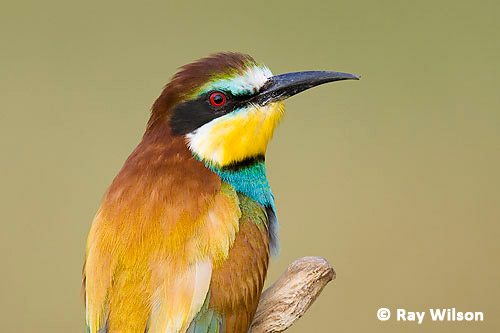
The European Bee-eater is a widespread and common species in warm open habitats that have a plentiful supply of hymenopterans. It breeds thoughout southern Europe, north Africa and western Asia, and winters in sub-Saharan Africa. There is also a small breeding population in South Africa and Namibia.
 |
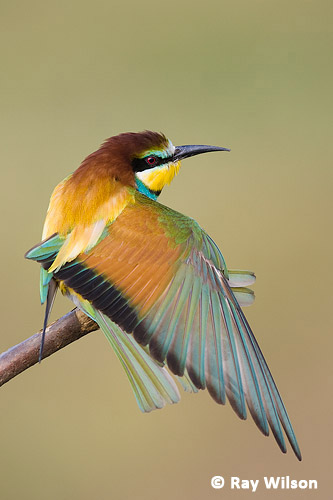 |
Preening activity is often interspersed with single wing stretches, as can be seen in the photos here. Another common stretch is to raise its forewings over its back with the "wrists" nearly touching (below left).
 |
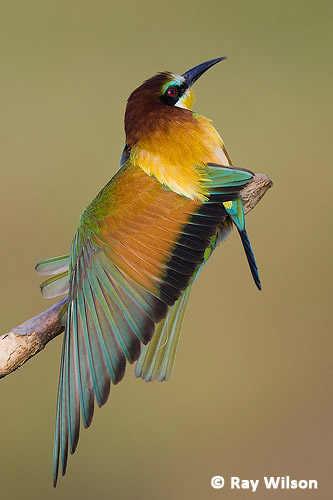 |
Bee-eaters catch the vast majority of their prey in flight. Their usual tactic is to sit on a prominent perch and make short hawking attacks on any passing insect, usually bees or wasps, before returning to the perch to eat its prey. Smaller prey, such as ants and termites, is also eaten, but this is usually captured during long, swooping ariel flights and eaten while still airborn.
 |
 |
 |
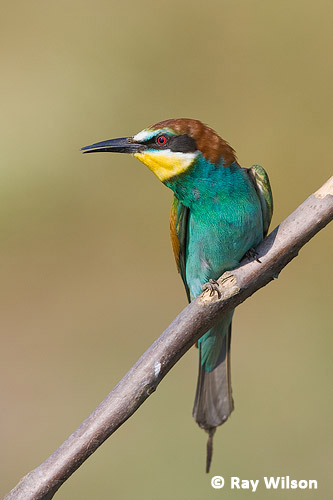 |
European Bee-eaters nest in small colonies of up to several hundred pairs, although around 10 pairs is more typical.
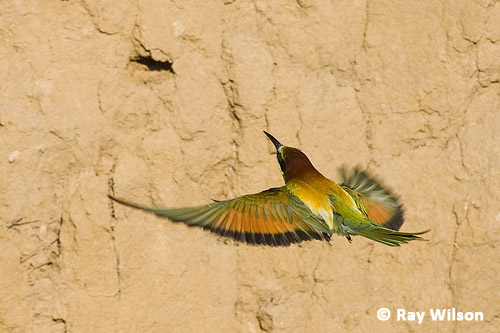
Their nest comprises a 2m long tunnel, ending in a nesting chamber, dug into the clay, soft sandstone or sand of steep banks or cliffs. The colony featured in the photographs here was situated in an small, disused quarry.
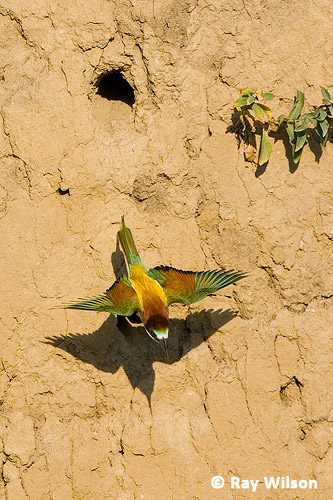
Ray Wilson owns the copyright of all images on this site.
They may not be used or copied in any form without prior written permission.
raywilsonphotography@googlemail.com